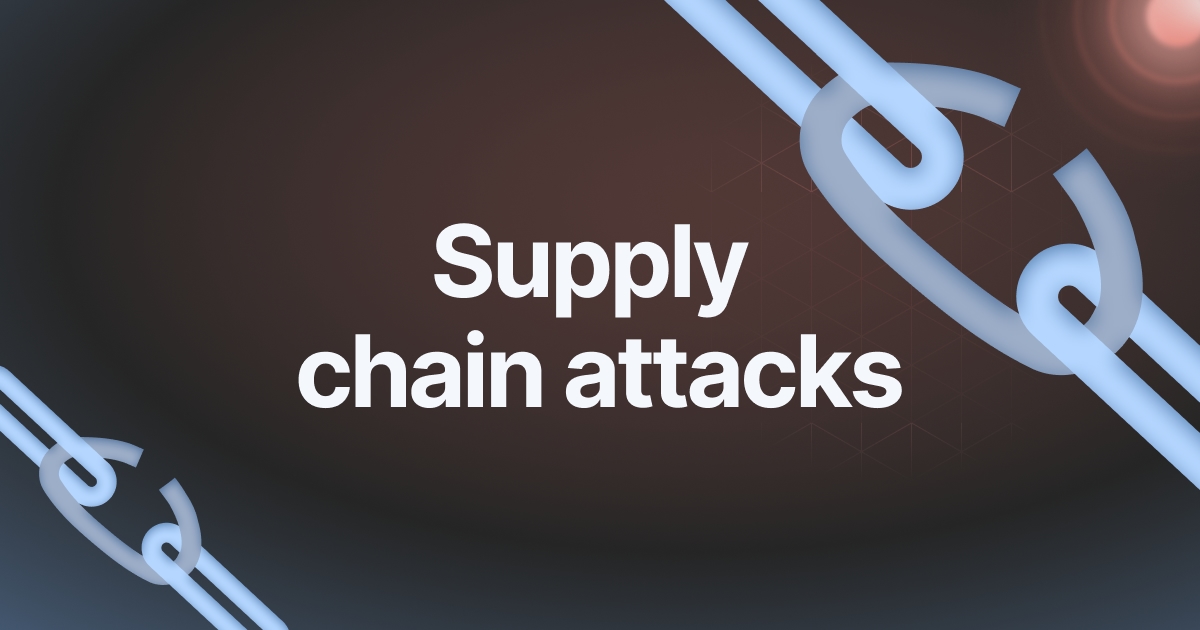In today’s highly connected digital world, the idea of a safe “perimeter” around your company’s data is quickly becoming obsolete. A new form of cyberattack, known as the Supply Chain Attack, has emerged, exploiting the complex web of services and software that businesses rely on. This article focuses on the supply chain attack, the threat landscape and the weaknesses of your business. It also outlines the actions you can take to strengthen your defenses.

The Domino Effect: How a Tiny Flaw Can Cripple Your Business
Imagine the following scenario: Your business is not using an open source software library that is vulnerable to an identified vulnerability. However, the data analytics provider you count heavily on has. This minor flaw could become your Achilles heel. Hackers use this vulnerability, present in open-source software to gain access into the systems of the service provider. They now have access into your company, through an unnoticed connection to a third partner.
The domino effect is an excellent illustration of the sly nature of supply chain threats. They penetrate seemingly secure systems through exploiting vulnerabilities in partner programs, open-source libraries or cloud-based services.
Why Are We Vulnerable? The rise of the SaaS Chain Gang
In fact, the very factors which have fuelled the modern digital age – the adoption of SaaS software and the interconnectedness amongst software ecosystems — have created the perfect storm of supply chain threats. It’s impossible to monitor each piece of code in these ecosystems, even though it’s indirectly.
Beyond the Firewall The traditional security measures Fail
It is no longer sufficient to rely solely on traditional cybersecurity measures aimed at fortifying your systems. Hackers are adept at identifying the weakest link in the chain, and evading firewalls and perimeter security to infiltrate your network through trusted third-party vendors.
Open-Source Surprise It is not the case that all code that is free is created equally
Another security risk is the massive popularity of open source software. Libraries that are open-source have numerous benefits however their widespread use and possible dependence on volunteers can pose a security issues. One flaw that is not addressed in a library with a large user base could expose many organizations that had no idea they were integrating it into their systems.
The Invisible Athlete: How to Identify a Supply Chain Attack
It is difficult to detect supply chain attacks because of the nature of their attack. Some warning signs may raise an alarm. Strange login patterns, strange information activity, or unanticipated software updates from third-party vendors could indicate an unsecure ecosystem. A major security breach at a well-known service or library might be an indication that your system has been compromised. Contact for Software Supply Chain Attack
A fortress built in the fishbowl: Strategies to minimize the risk of supply chain risks
So, how do you strengthen your defenses against these threats that are invisible? Here are a few important tips to be aware of:
Reviewing your Vendors: Follow a rigorous vendor selection process that involves evaluating their cybersecurity practices.
Mapping Your Ecosystem Make an outline of all the software, libraries, and services your organization uses, in a direct or indirect way.
Continuous Monitoring: Check every system for suspicious activity and keep track of the latest security updates from third-party vendors.
Open Source With Caution: Take care when integrating open source libraries. Choose those with a proven reputation and an active community of maintenance.
Transparency creates trust. Encourage your vendors to adopt strong security practices.
Cybersecurity in the future Beyond Perimeter Defense
The increase in supply chain breaches demands an entirely new way of thinking about how companies tackle cybersecurity. A focus on protecting your perimeter is no longer enough. The organizations must adopt an overall strategy that focuses on cooperation with suppliers and partners, transparency in the ecosystem of software and proactive risk mitigation across their supply chain. Recognizing the imminent threat of supply chain security threats and actively bolstering your security, you can ensure that your company is protected in an increasingly complex and interconnected digital environment.

